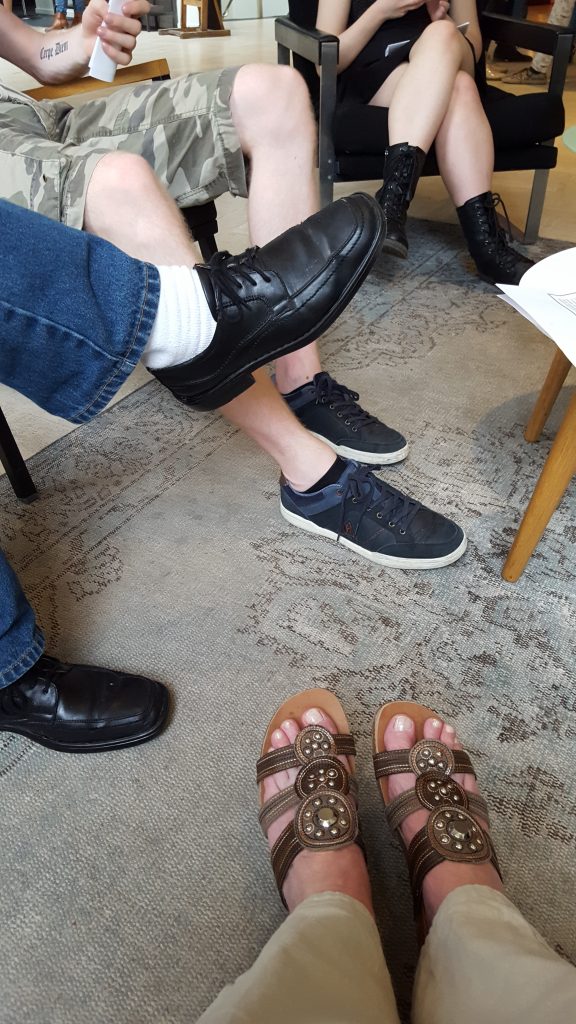Waiting and Projects

As already explained in the first part, the uncoupling of waiting from the stimulus entails higher uncertainty with regard to the probability of occurrence, which is increased by temporal extension.
An example: in the course of a project, people realise that its complexity is significantly higher than expected, which per se leads to the increased probability of failure. Researchers call this “dissociation”, i.e., the resources available to humans while waiting, include freedom of action, self-stimulation, temporal range and communicability.
Freedom of action consists in being allowed to take measures in response – or not, as the case may be. Mentioning something in a status report is an expression of communicability, and it is not necessary for third parties (the boss) to point out the complexity every other day, because people can wait without being dependent on extenal stimuli (self-stimulation). And all this can happen over considerable periods of time (temporal range), as the Berlin Airport and Stuttgart21 railway projects impressively prove.
Agilists boast with good reason interaction, cooperation and reaction to change as means to master complexity. Strictly speaking, this presupposes freedom of action, self-stimulation, temporal range and communicability, i.e. systematic waiting.
In contrast, in my observations waiting is often perceived as inaction, even when the waiting and the underlying motives are made transparent, i.e. communicated. And this by no means only the case for management and governance bodies.
And this would drive anyone crazy, because it is precisely the uncertainty inherent in complexity that requires … what actually?
Waiting and what it needs
Estragon: Let’s go!
Vladimir: We can’t.
Estragon: Why not?
Vladimir: We’re waiting for Godot.
Even though in Beckett’s play the tramp Estragon has rather forgotten that they are waiting for Godot, it gives expression to the theoretical possibility that waiting can come be ended. At some point, the time is reached when waiting is no longer perceived as useful. The trade-off between the presumed outcome of waiting and the process of waiting itself is to the detriment of the outcome.
Unfortunately, different project participants may have very different views on the timing and outcome of the trade-off.
In this context, it should also be briefly mentioned that research has also identified cultural differences in waiting, which will probably come as no surprise to our dear readers. Patience is typically not one of the most prominent characteristics of American managers and employees. I know this from many years of personal experience. Contrast this with the group of our Brexit friends. George Mikes is supposed to have said that Englishmen are the only people capable of standing alone in a queue. I can confirm this for the pint in the pub, even if, as already mentioned in Part 1, the Scots have made first-come-first-served a principle. My personal experience in professional life has been different. But to redeem myself, it can also be concluded that the value system in the UK sets the right priorities. Beer comes first.

But back to projects. In the project simulation I have developed, Swiss Island®, we confront the players with a complex, 20-month project that is beset with high risks right from the start. As expected, the teams that are most successful are those that initially wait and don’t immediately try, come hell or high water, to get to grips with the complexity.
What characterises these teams’ approach? What general competencies make the difference?
Tactic no.1: no surprises
As discussed in previous articles on this platform (e.g. https://harlekin.blog/en/the-turkeys-resilience-on-thanksgiving), people react less emotionally and more predictably to events that were foreseeable than to surprises. Communicated imponderables generally generate less resentment than non-communicated ones when they occur and also allow for a shared wait-and-see approach.
Tactic no.2: serenity
The ‘Serenity Prayer’ is probably familiar to most readers: God grant me the serenity to accept the things I cannot change; courage to change the things I can; and wisdom to know the difference. There is more to this than at first sight – but it requires reflection. Especially thinking about expectations: your own and others’. The project should run as smoothly as possible and even small deviations from the plan transform the feeling of control into uncertainty and annoyance. Serenity allows a different way of dealing with deviation from expectations and opens up thinking about alternatives.
Tactic no.3: mindfulness
Mindfulness comes from Buddhist teachings and has found its way into various physiotherapy methods. In the context of this article, it refers to the form of attention that aims to perceive waiting not only as lost time, but also to use it to avoid overlooking options that would have remained unrecognised if the focus had been exclusively on the future.
Tactic no.4: cybernetics
Since the 1970s, bright minds have been working on the question of how cybernetic principles can be applied to organisations. Names like Malik and Heinz von Foerster keep popping up in this context and Heinz von Foerster’s “ethical imperative”, which I always like to refer to, completes the tactics: “Always act in a way that increases the number of choices!”
To conclude my post, here’s an exciting insight from research that gives risk-taking readers another option. I leave it to the reader to assess under what conditions its application seems justifiable. A study by the Harvard Business School shows that customers perceive waiting as less negative as long as they have the impression that work is being done for them during the waiting time (“labour illusion”). But it gets even better: customers who had to wait subsequently rated the quality of service higher than those who did not have to wait! However, only if the result also met expectations.
Original text: RGE
English translation: BCO

